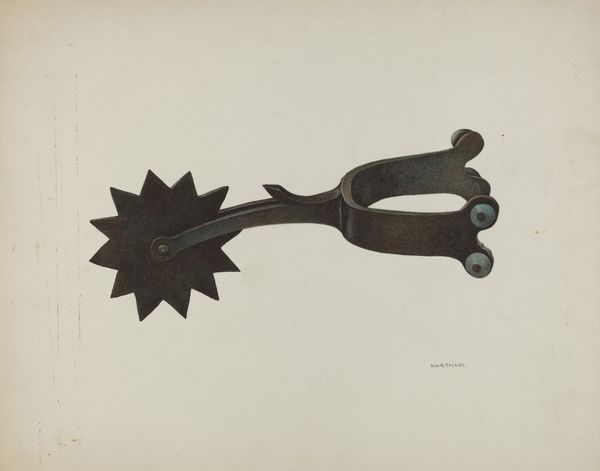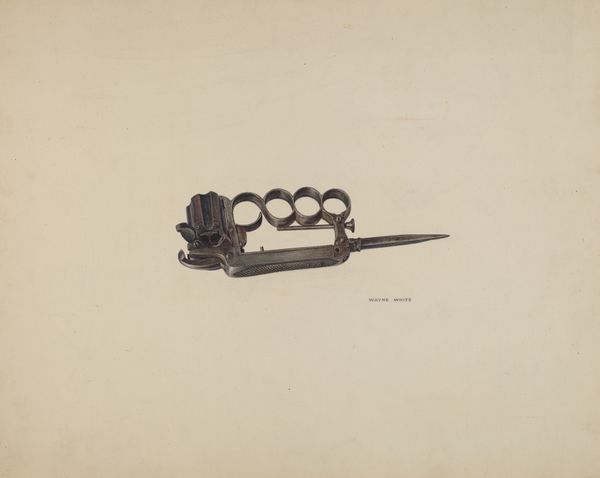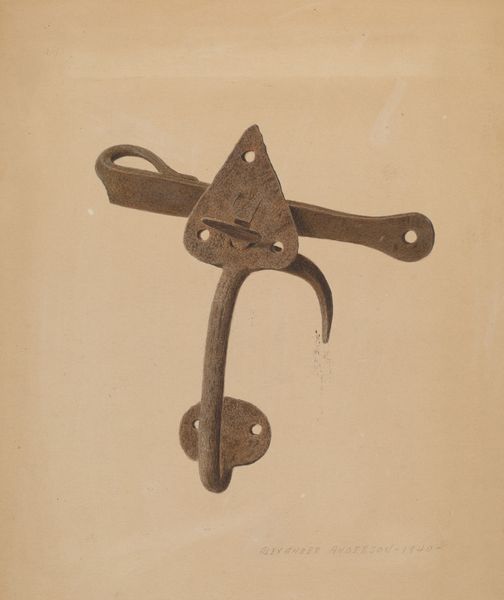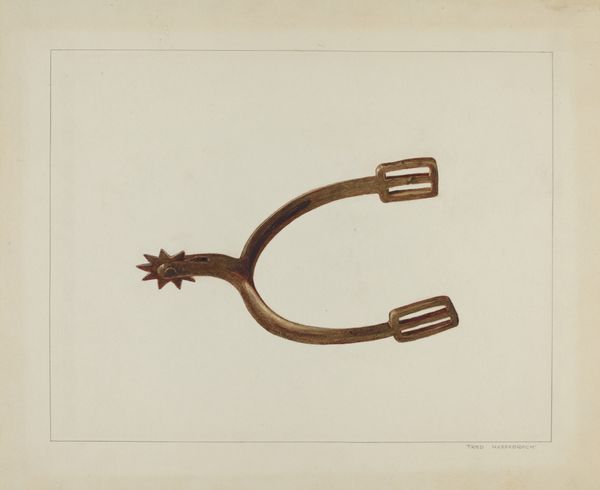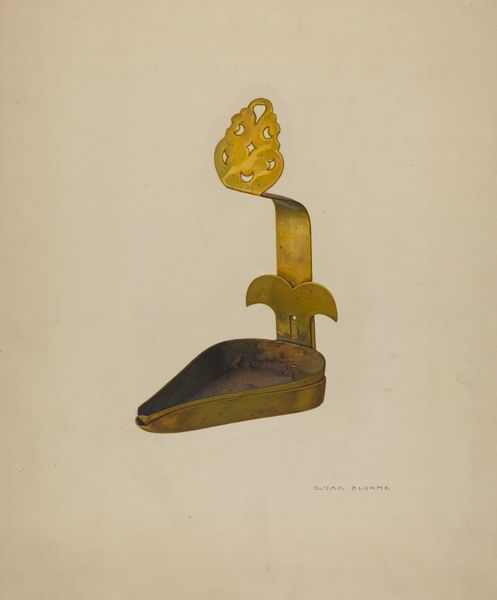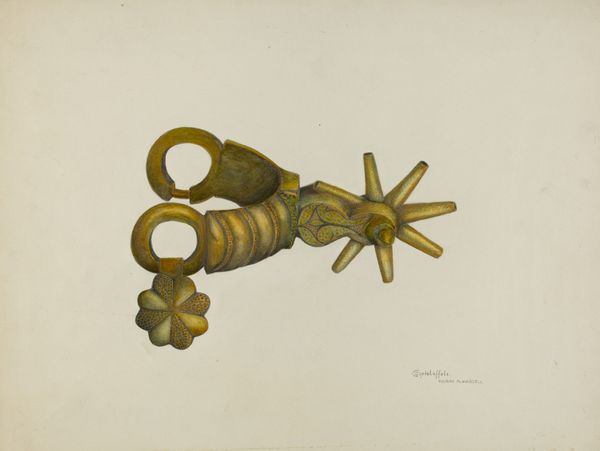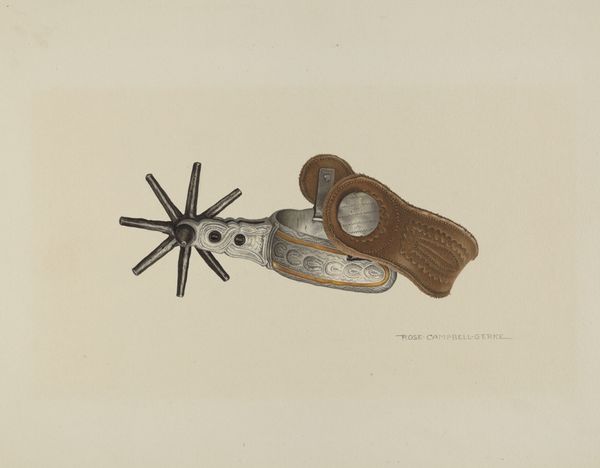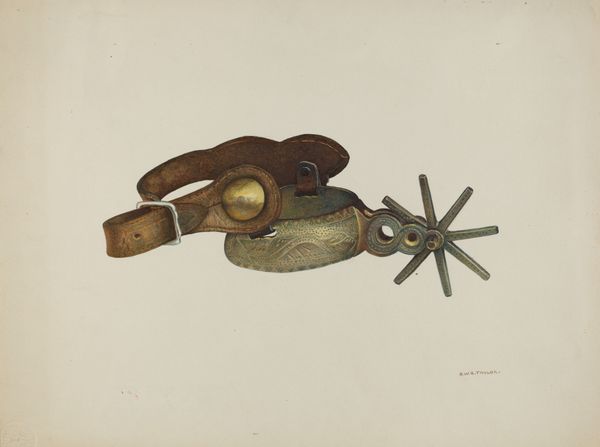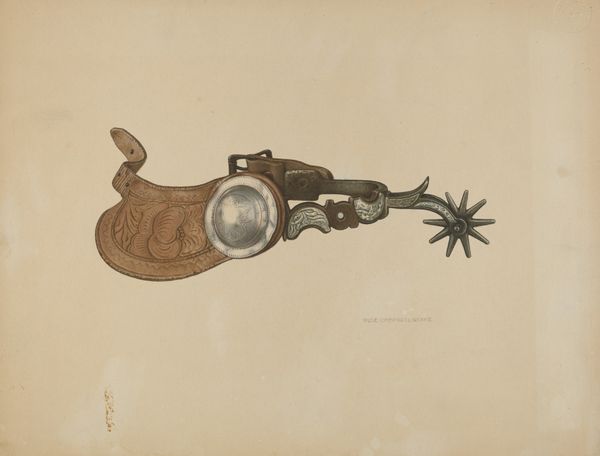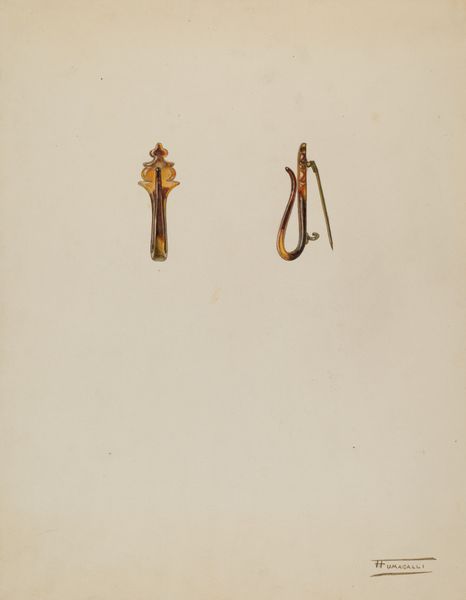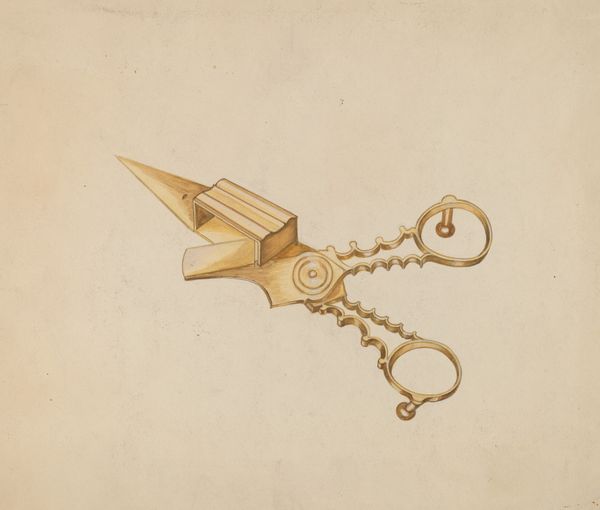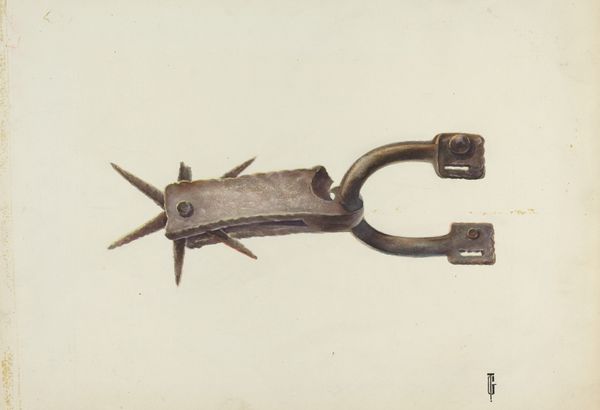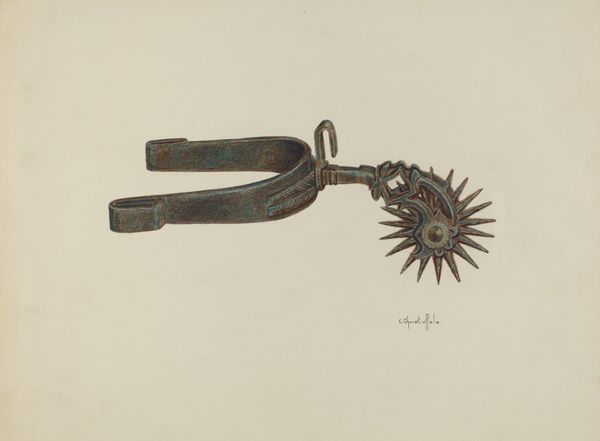
drawing, watercolor
#
drawing
#
watercolor
#
watercolour illustration
#
watercolor
#
realism
Dimensions: overall: 27.8 x 35.4 cm (10 15/16 x 13 15/16 in.) Original IAD Object: 5 1/4" long; 1 3/4" high
Copyright: National Gallery of Art: CC0 1.0
Curator: Well, hello there. Isn't that fascinating? The detail in Rose Campbell-Gerke's watercolor drawing "Spur", created around 1940. What are your immediate thoughts? Editor: Striking detail indeed, but the overall composition feels oddly…sterile. The singular object, starkly isolated against the off-white ground, almost removes the tool from its intended function. What purpose does this isolated image serve, beyond the visual cataloging of an object? Curator: But that’s precisely the point! It makes you consider labor and functionality. Who crafted this spur? What were the economic conditions and how was this decorative item produced, purchased, and consumed? Editor: While I acknowledge the embedded context of production, I’m far more intrigued by the spur itself as a formal study in balance and contrast. Observe the rough spikes juxtaposed with the polished surfaces, the warm hues offset by the cold steel. Doesn't that capture your attention first? Curator: To me, that interplay tells us much more. This is about class and the history of the American West. What stories might this spur tell about labor, trade, gender roles, and ranching? Editor: But isn't that story imposed by our pre-existing understanding? If we detach it from historical assumptions, we have a composition centered on a dialogue between aggressive angles and graceful curves, the harsh reality of its utility and the potential refinement, even luxury, within its presentation. Curator: You see refinement. I see evidence of a specific socio-economic moment! Look at how this practical item became almost a status symbol during its manufacturing, sale, and ultimate use. It hints at power dynamics. Editor: Perhaps we are seeing two sides of the same coin, wouldn’t you say? Where you see history of the tool, I recognize history within the lines of its presentation. Curator: Well put. I'm drawn to it because of its social implications and you find meaning within its shape. That's where we began to form an aesthetic connection, I think.
Comments
No comments
Be the first to comment and join the conversation on the ultimate creative platform.
